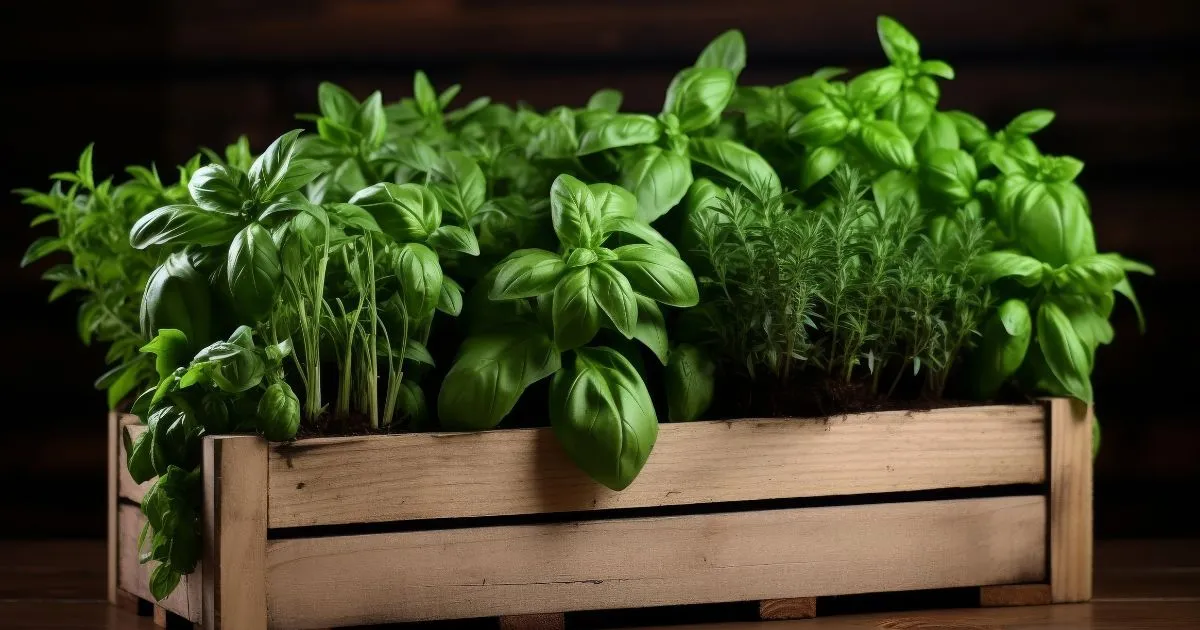Table of Contents
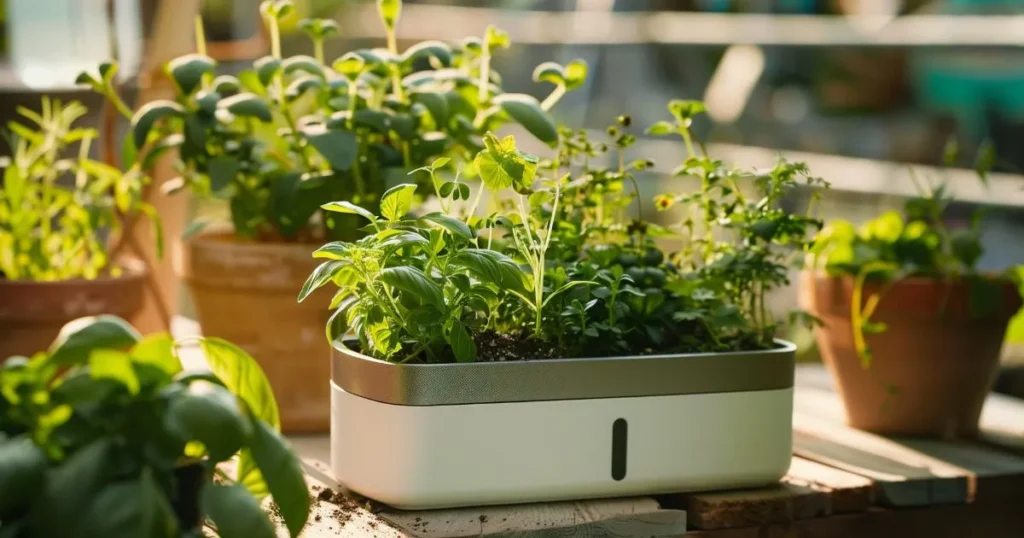
Growing herbs in containers is a fantastic way to cultivate fresh, flavorful plants in small spaces. Whether you have a tiny balcony, a kitchen windowsill, or a full backyard, container gardening allows you to enjoy a thriving herb garden with minimal effort. In this article, we will explore everything you need to know about growing herbs in containers, from selecting the right pots and soil to caring for your plants and maximizing their yield.
Why Growing Herbs in Containers is Beneficial
Convenience and Accessibility
Growing herbs in containers makes it easy to have fresh herbs at your fingertips. You can place them near your kitchen, on a patio, or even indoors under a grow light, ensuring that they are always within reach for cooking and medicinal use.
Space-Saving Gardening
For those with limited garden space, growing herbs in containers is the perfect solution. Even if you live in an apartment or have a small yard, you can still grow a variety of herbs in pots, hanging baskets, or vertical planters.
Easy Maintenance
Container-grown herbs require less maintenance than traditional garden beds. Weeds are less of an issue, and managing soil conditions, watering, and pest control is simpler in a controlled environment.
Mobility and Flexibility
With container gardening, you can move your herbs to different locations based on sunlight requirements, weather conditions, or aesthetic preferences.
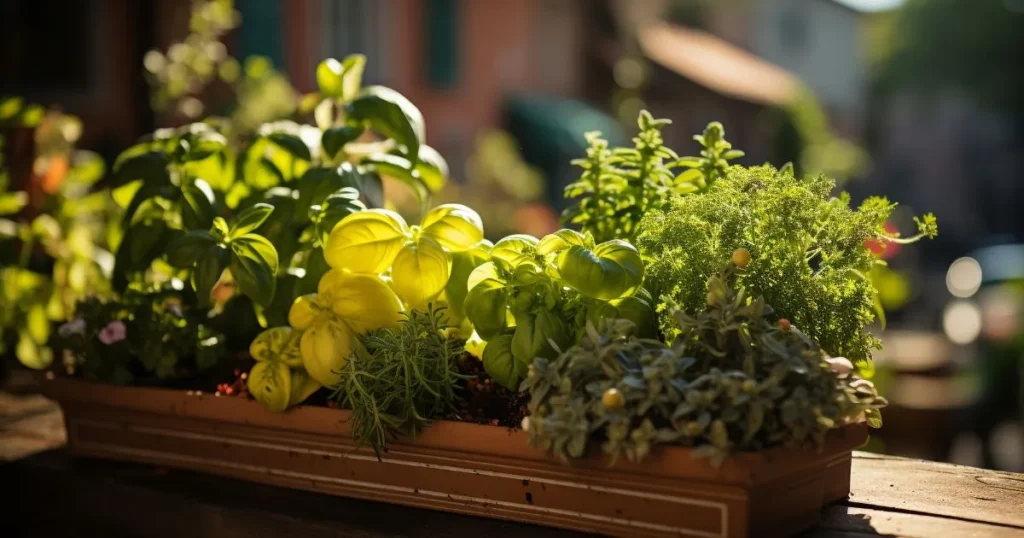
Choosing the Right Containers for Growing Herbs in Containers
Material Considerations
There are various container materials to choose from, each with its advantages:
- Terracotta pots: Provide excellent breathability but may dry out quickly.
- Plastic containers: Lightweight and retain moisture well.
- Ceramic pots: Attractive but can be heavy and prone to breakage.
- Wooden planters: Great for aesthetics and insulation but may rot over time.
- Metal containers: Durable but can heat up quickly in direct sunlight.
Drainage Matters
Proper drainage is crucial when growing herbs in containers. Ensure your pots have drainage holes to prevent root rot. If necessary, add a layer of gravel or broken pottery at the bottom to improve drainage.
Size Considerations
The size of your container depends on the herb type:
- Small pots (6-8 inches): Suitable for herbs like chives, thyme, and parsley.
- Medium pots (10-12 inches): Ideal for basil, cilantro, and oregano.
- Large pots (14 inches and above): Best for rosemary, mint, and lavender.
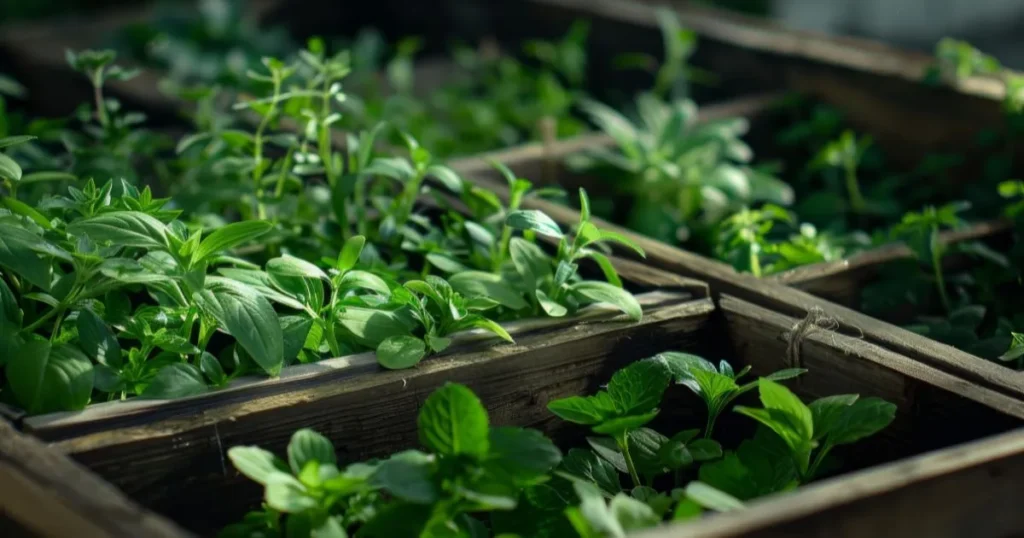
The Best Soil for Growing Herbs in Containers
Choosing the Right Soil Mix
Growing herbs in containers requires well-draining soil. A high-quality potting mix with compost and perlite or sand works best. Avoid using garden soil, as it can become compacted and hinder root growth.
Enhancing Soil Fertility
To promote healthy herb growth, enrich the soil with:
- Compost: Provides essential nutrients and improves soil structure.
- Organic fertilizers: Such as fish emulsion or worm castings.
- Mulch: Helps retain moisture and regulate soil temperature.
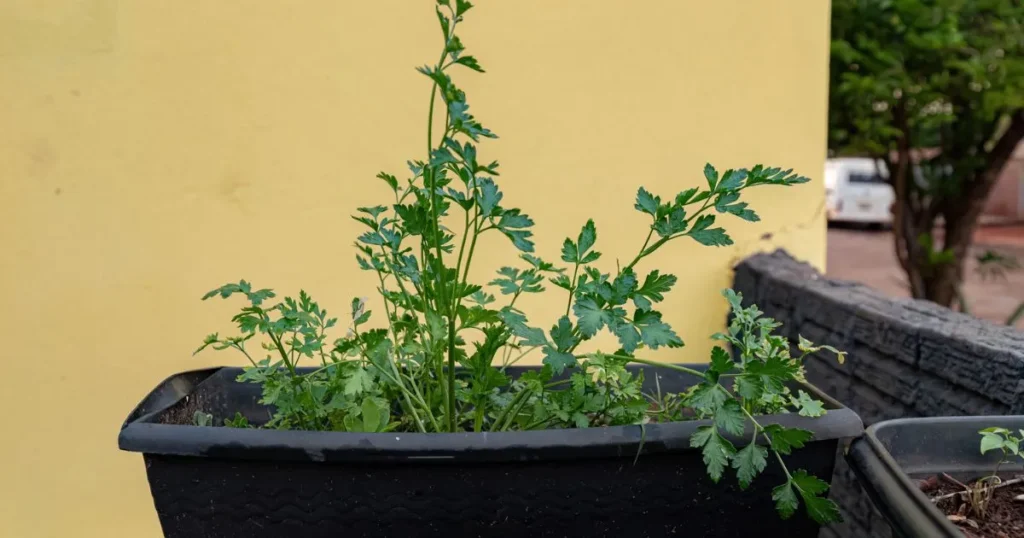
Selecting the Best Herbs for Growing Herbs in Containers
Best Herbs for Beginners
If you’re new to growing herbs in containers, start with these easy-to-grow varieties:
- Basil: Fast-growing and perfect for culinary use.
- Mint: Hardy and thrives in partial shade.
- Parsley: Versatile and grows well in pots.
- Thyme: Low-maintenance and drought-tolerant.
- Chives: Adds a mild onion flavor to dishes.
Perennial vs. Annual Herbs
- Perennial herbs (e.g., rosemary, oregano, lavender) continue growing year after year.
- Annual herbs (e.g., basil, cilantro, dill) complete their life cycle in one season and need to be replanted.
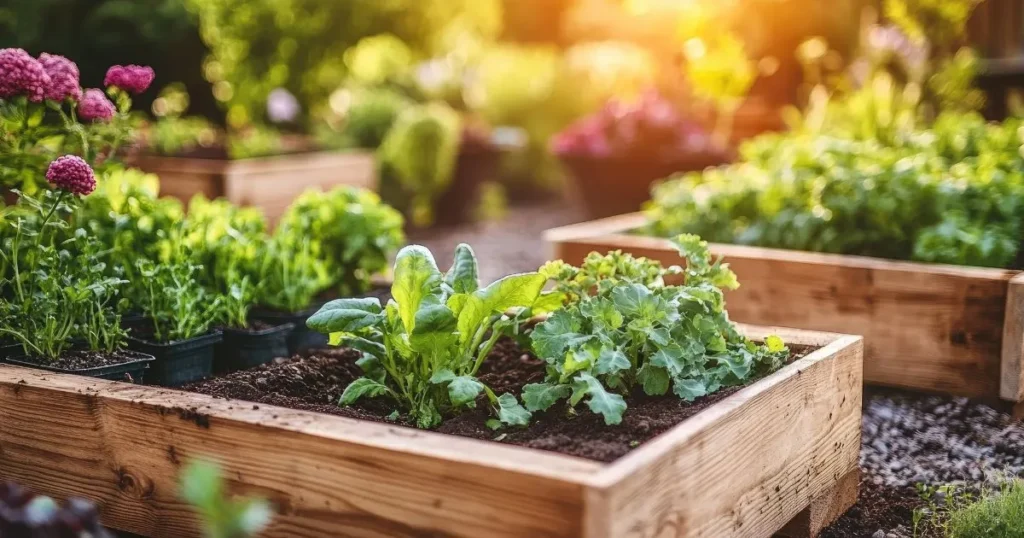
Planting and Caring for Herbs in Containers
How to Plant Herbs in Containers
- Choose the right container: Ensure it has adequate drainage.
- Prepare the soil mix: Use a well-draining potting mix.
- Plant the herbs: Space them appropriately to avoid overcrowding.
- Water thoroughly: Ensure the soil is moist but not soggy.
- Place in a sunny spot: Most herbs need at least 6 hours of sunlight per day.
Watering Your Herbs
- Water when the top inch of soil feels dry.
- Avoid overwatering, as it can cause root rot.
- Use a watering can with a gentle spout to prevent soil erosion.
Fertilizing Herbs
- Feed herbs with a diluted liquid fertilizer every 2-4 weeks.
- Avoid excessive nitrogen, which can promote leafy growth but reduce flavor.
Pruning and Harvesting Herbs
- Regular pruning encourages bushy growth and prevents legginess.
- Harvest herbs frequently to promote continuous production.
- Use sharp scissors to cut stems just above a leaf node.
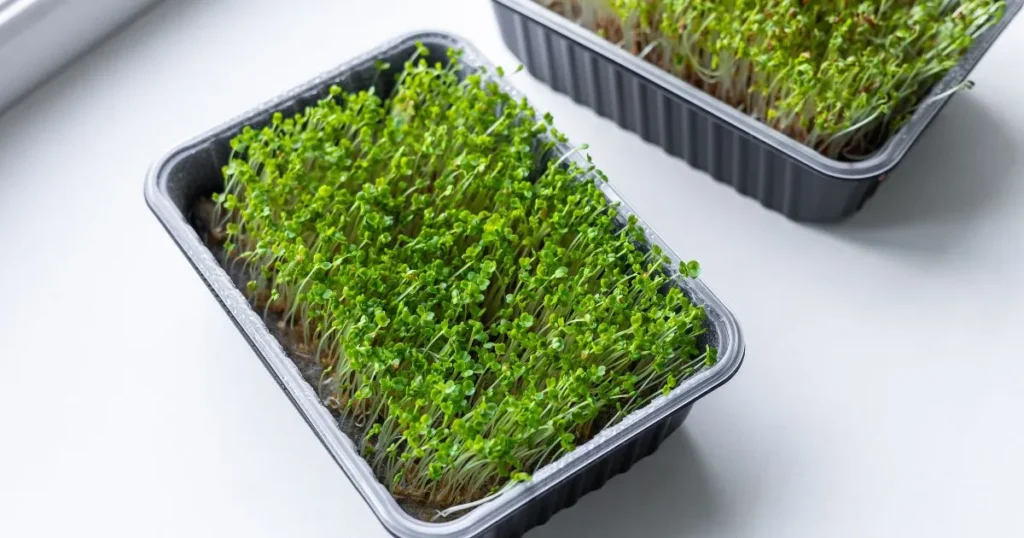
Dealing with Pests and Diseases in Container Herb Gardening
Common Pests
- Aphids: Can be controlled with neem oil or insecticidal soap.
- Spider mites: Rinse leaves with water or use a natural pesticide.
- Whiteflies: Introduce beneficial insects like ladybugs.
Preventing Diseases
- Ensure good air circulation around plants.
- Water at the base of plants to prevent fungal infections.
- Remove dead or diseased leaves promptly.
Winter Care for Herbs in Containers
- Move tender herbs indoors before the first frost.
- Insulate outdoor containers with burlap or bubble wrap.
- Reduce watering in colder months to prevent root rot.
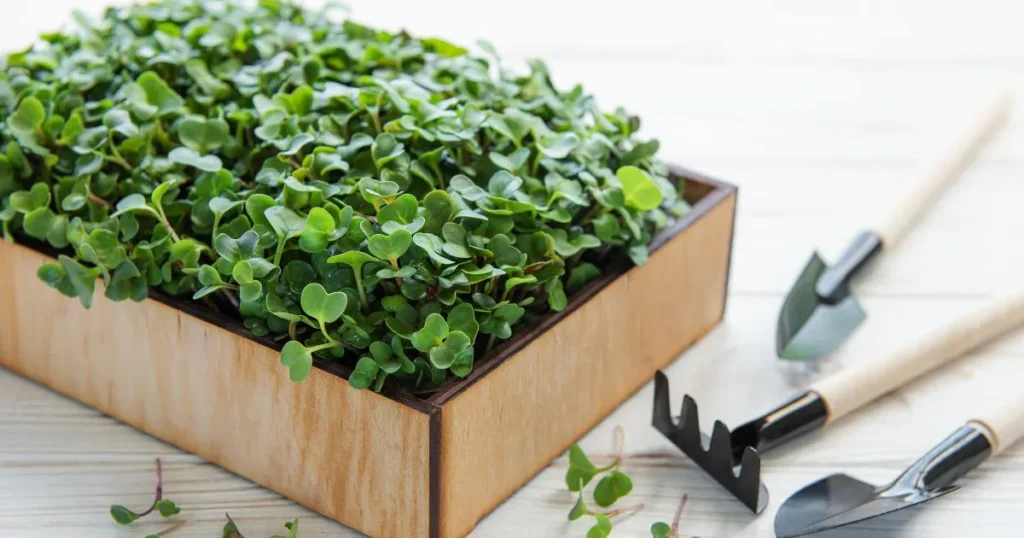
Conclusion
Growing herbs in containers is an enjoyable and rewarding activity that allows gardeners of all skill levels to enjoy fresh, aromatic herbs year-round. With the right containers, soil, and care, you can cultivate a thriving herb garden no matter how much space you have. Whether you’re growing basil on a windowsill or a full selection of herbs on a patio, container gardening offers a convenient and efficient way to produce flavorful, homegrown herbs.
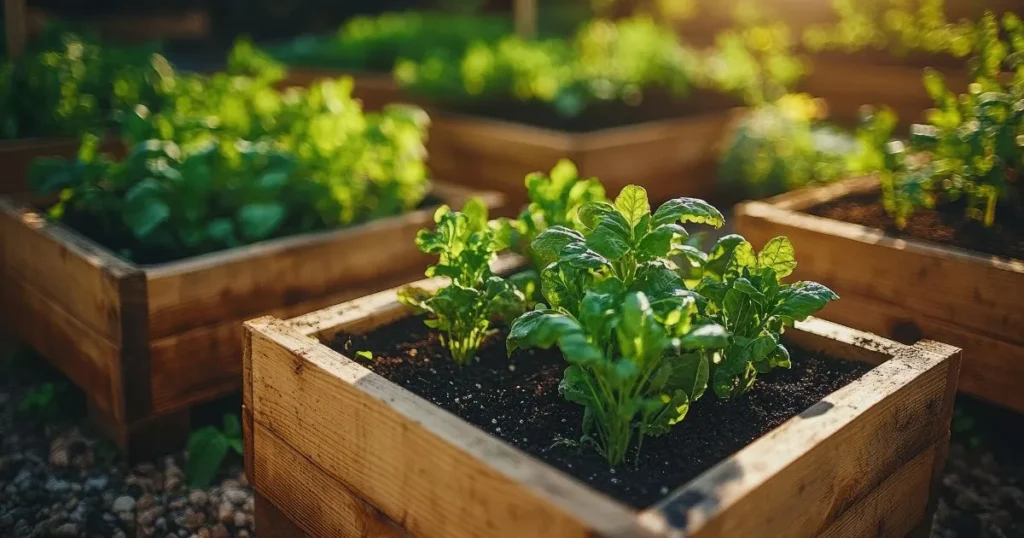
FAQ :About Growing Herbs in Containers
1. What are the easiest herbs to grow in containers?
Basil, mint, chives, parsley, and thyme are some of the easiest herbs to grow in containers.
2. How often should I water my herbs?
Watering frequency depends on the herb and climate. In general, water when the top inch of soil feels dry.
3. Can I grow herbs indoors?
Yes! Many herbs thrive indoors, provided they receive enough light. A south-facing window or grow light works well.
4. What size container should I use for herbs?
Small herbs like thyme need 6-inch pots, while larger herbs like rosemary require 12-inch or larger pots.
5. Do herbs need fertilizer?
Yes, but sparingly. Use a balanced, organic liquid fertilizer every few weeks for best results.
6. Can I plant multiple herbs in one container?
Yes, but choose herbs with similar watering and sunlight needs, such as rosemary and thyme together or basil and parsley.
7. How do I prevent my herbs from getting leggy?
Regular pruning, proper sunlight exposure, and moderate fertilization will help keep herbs compact and healthy.
Growing herbs in containers is a practical and fun way to bring fresh flavors to your cooking while maximizing limited space. With these tips, you’ll be well on your way to a flourishing container herb garden!

